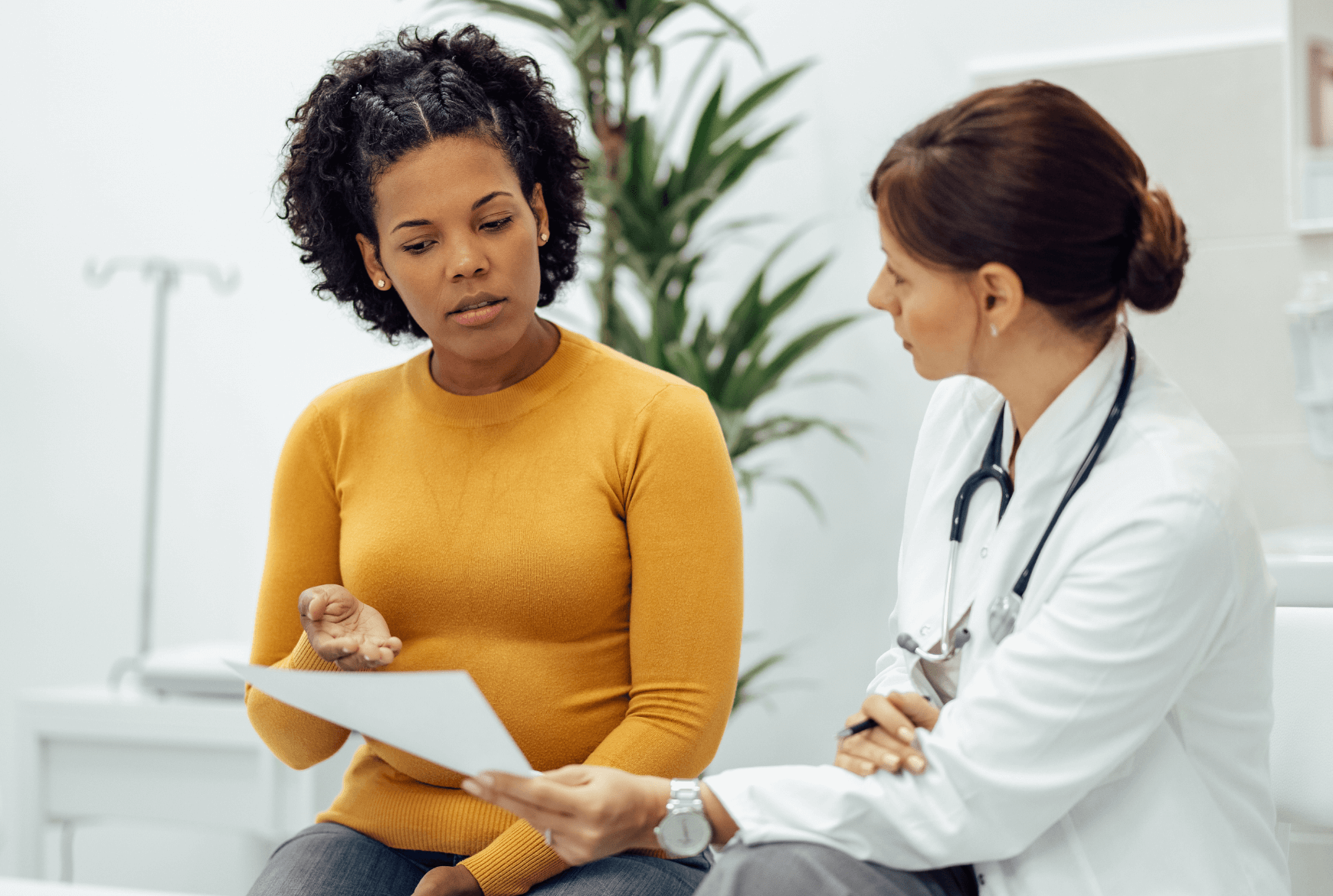Menopause: possible symptoms and treatments

Menopause is not always easy to bear, but it’s not a disease, either. It’s a required rite of passage, and it’s not always horrible for every woman.
Your body may catch you off guard at times, like when you experience a sudden hot flash, but there are treatments to help you cope.
Premenopause. Menopause. What’s the difference?
Premenopause (or perimenopause) is a period of hormonal instability that precedes menopause. It lasts between 7 and 14 years.
Your period becomes irregular. You experience hot flashes and night sweats for the first time. And you’re more irritable. These are the typical pre-cursors to menopause, and can start as early as age 40.
During menopause, ovaries stop producing estrogen, and menstruation slows to a stop over a period of 10 to 12 months. This process occurs between ages 45 and 55 for most women. This rite of passage, which lasts several years, really puts a woman’s body to the test.
The joy of menopause!
Joy? Not really, ha ha. If some women get by with few issues, it’s no walk in the park for others!
There’s a shockingly high number of possible symptoms. No less than 34 of them, in fact. And what they all have in common is that they can come on without warning at any time and vary from one month to the next, and even one day to the next. The symptoms manifest at varying levels, and are also experienced at varying degrees on a daily basis. Some women even notice that they’re not themselves because their behaviour and mood change so much.
At the top of the list of symptoms are hot flashes. It’s that sudden flush of heat that catches you completely off guard. In a few seconds, it climbs up to your neck, face, and in the snap of a finger, your cheeks are beet red. Sometimes, they’re accompanied by palpitations and sweating.
Hot flashes are more than a sensation that occurs out of the blue. They can affect you every day. So much so that between 50 and 80% of women seek medical help.
Other common symptoms
- Night sweats – The sweating occurs suddenly and throughout the entire body. Some women sweat so much that they have to change their clothes or sheets.
- Sleep disorders – Trouble falling asleep, waking up several times during the night, insomnia. These are possible consequences of hormonal changes.
- Mood swings – Irritability, anxiety, lack of energy. Some women cry more often, others can’t tolerate screaming children or want a divorce three times a day. It can get quite extreme. And it can even lead to depression.
Let’s end the list by adding lowered libido, vaginal dryness, loss of bladder control, joint pain, skin aging, loss of hair and weight gain.
Menopause is no joke. Fortunately, there are solutions that can relieve some of these problems. And make this inevitable stage of life a lot more palatable. You’ll see, it’s encouraging!
There are many treatments, but finding the right one is the trick!
How can you relieve your symptoms? Depends on their severity and to what extent they disrupt your life. You can consider hormonal treatments, and other various options, with your healthcare professional.
Traditional hormone therapy
Hormone therapy (This hyperlink will open in a new tab). is for women with moderate to severe symptoms. By severe we mean that they compromise their:
- Quality of life on a daily basis
- Couple and family relationships
- Enjoyment they get from working
- etc.
Before the symptoms cause too much damage, hormone therapy can be a viable solution.
It re-balances the hormone levels (estrogen and progesterone) and provides some relief from symptoms.
Hormone therapy involves taking oral tablets, applying skin patches (transdermal) and gels.
There are some side effects associated with hormone therapy.
- Irregular menstrual bleeding at the start of therapy (3-6 months)
- Nausea
- Headaches
- Bloating
- Sensitive breasts
An annual medical evaluation is recommended. Same for a close monitoring of this therapy, since there is a time limit.
The Canadian Cancer Society (This hyperlink will open in a new tab). recommends speaking with your doctor to assess your personal risks associated with hormone therapy.
Bio-identical hormones
What separates this version of the therapy from the traditional one? The same synthetic hormones are involved (estrogen and progesterone), but they’re identical to the hormones produced by a woman’s body.
Estrogen comes in the form of patches or gels. Progesterone is taken as a tablet.
Does it work? As far as estrogen is concerned, many studies have shown that the risk of blood clots is lower compared to traditional therapy.

Treatments without hormones
Some prescription medications (This hyperlink will open in a new tab). can help with hot flashes. These include certain anti-depressants such as venlafaxine.
For night sweats, some anticonvulsant drugs, such as gabapentine, may work for some. They may prove useful, especially if you take them right before going to bed.
Clonidine could also work to prevent hot flashes. But there are a few side effects such as dizziness, dry mouth, sleepiness and constipation.
Menopause and YOU
Even though there’s no miracle solution for menopause, there are definitely worthwhile mitigating solutions. Talk to a healthcare professional. Don’t hesitate to talk to other women in your circle and remember to listen to your body.
